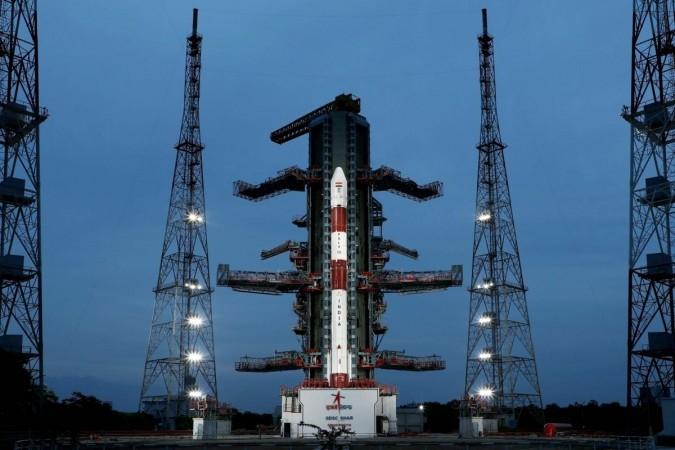The Indian Space Research Organisation (ISRO) will be launching seven Singaporean satellites on July 30 using its Polar Satellite Launch Vehicle (PSLV).
ISRO will start the registration of the public wanting to witness the launch from Monday evening onwards.
According to the space agency, the PSLV rocket with the code PSLV-C56 will carry the Singaporean DS-SAR satellite weighing about 360 kg as the main passenger.
The other six co-passengers are small satellites -- VELOX-AM, ARCADE, SCOOB-II are from Nanyang Technological University, Singapore; NuLIoN belonging to NuSpace Pte Ltd, Singapore, Galassia-2 from National University of Singapore and ORB-12 STRIDER from Aliena Pte. Ltd., Singapore.
ISRO said the PSLV-C56 rocket is configured in its core-alone mode -- without the additional strap-on motors to give additional thrust during the initial flight stage.
It would launch the DS-SAR satellite into a Near-equatorial Orbit (NEO) at 5 degrees inclination and 535 km altitude.
The DS-SAR satellite is developed under a partnership between DSTA (representing the government of Singapore) and ST Engineering.
Once deployed and operational, it will be used to support the satellite imagery requirements of various agencies within the government of Singapore.

ST Engineering will use it for multi-modal and higher responsiveness imagery and geospatial services for their commercial customers.
DS-SAR carries a Synthetic Aperture Radar (SAR) payload developed by Israel Aerospace Industries (IAI). This allows the DS-SAR to provide for all-weather day and night coverage, and capable of imaging at one metre resolution at full polarimetry.
On the other hand, the VELOX-AM, is a 23 kg technology demonstration microsatellite; ARCADE Atmospheric Coupling and Dynamics Explorer (ARCADE) is an experimental satellite; SCOOB-II, a 3U nanosatellite flying a technology demonstrator payload: NuLIoN by NuSpace, an advanced 3U nanosatellite enabling seamless IoT connectivity in both urban & remote locations; Galassia-2, a 3U nanosatellite that will be orbiting at low earth orbit and ORB-12 STRIDER satellite is developed under an International collaboration, ISRO added.
The Indian space agency said the PSLV-C56 rocket will blast off from the first launch pad at the Sriharikota spaceport in Andhra Pradesh.
The proposed rocket mission is the second one for ISRO in a space of about two weeks.
On July 14, ISRO rocket LVM3 put into orbit the Chandrayaan-3 spacecraft.
The NewSpace India Ltd (NSIL) the commercial arm of the Department of Space has procured the PSLV-C56 rocket to launch the satellites from Singapore.

Following this mission will be another interplanetary mission.
And this time the Sun Mission for ISRO.
The ISRO will be sending up its Aditya L1, a coronagraphy satellite, on a PSLV rocket to study the solar atmosphere towards the end of August.
According to ISRO, the spacecraft will be placed into a halo orbit around the first Lagrange point, L1, of the Sun-Earth system.
The satellite around the L1 point has the major advantage of continuously viewing the Sun without occultation/eclipses.
The Aditya L1 mission is slated to happen a couple of days after ISRO attempts to land on the lunar soil its lander that is being carried by the Chandrayaan-3 spacecraft.
After that will be the orbiting of Anwesha satellite and XPoSAT- a X-Ray Polarimeter Satellite with the ISRO's Small Satellite Launch Vehicle (SSLV).
It will be the country's dedicated polarimetry mission to study the dynamics of bright astronomical X-ray sources in extreme conditions, the government said.
The launch of the Radar Imaging Satellite- RISAT-1B aboard the PSLV rocket is planned in the second half of 2023.
The Indian space agency with its Geosynchronous Satellite Launch Vehicle (GSLV) plans to orbit INSAT-3DS and two IDRSS (Indian Data Relay Satellite System) satellites.
These rocketing missions apart, ISRO will be testing the various systems that will go into its LVM3 rocket for the maiden human space mission.
Looking back at the year, ISRO had two successful commercial launches and three of the nation's satellites.
The two commercial missions were the launch of 36 satellites belonging to the UK-based OneWeb with the LVM3 rocket in March and the TeLEOS-2 satellite with two piggyback payloads in April.
In February, ISRO launched the earth observation satellite EOS-7 with the SSLV rocket, the navigation satellite NVS-01 in April with the GSLV rocket and the prestigious Chandrayaan-3 mission with the LVM3 rocket in July.
(With inputs from IANS)

















